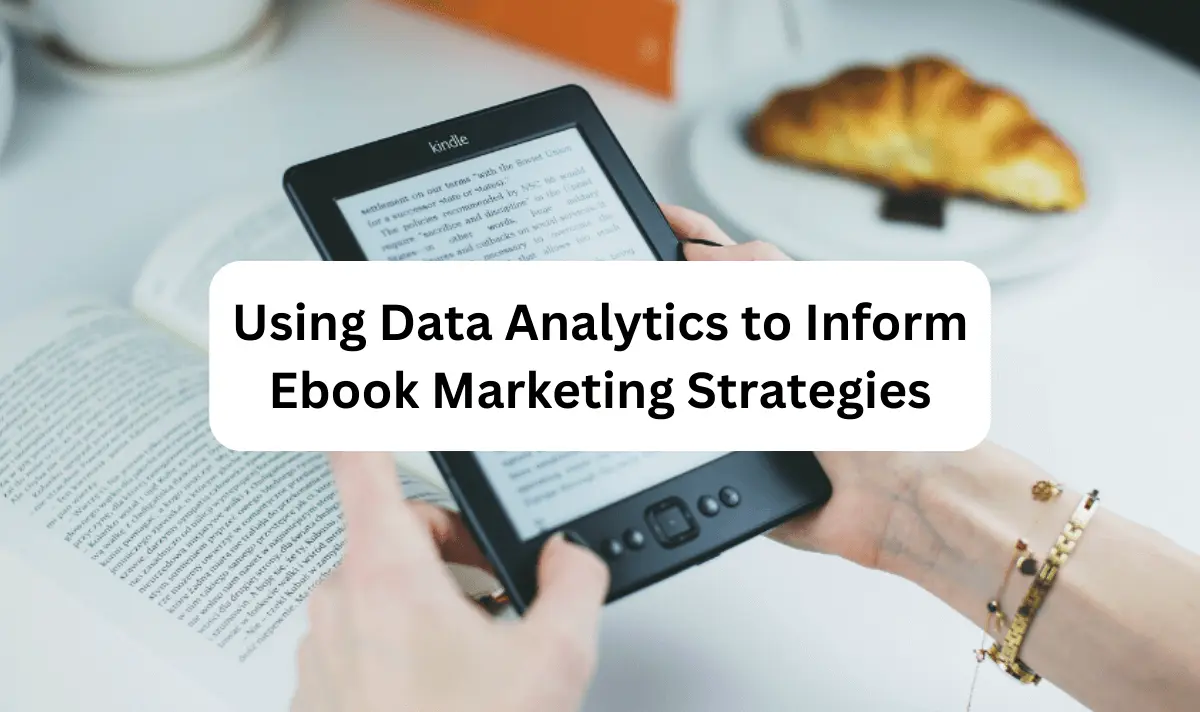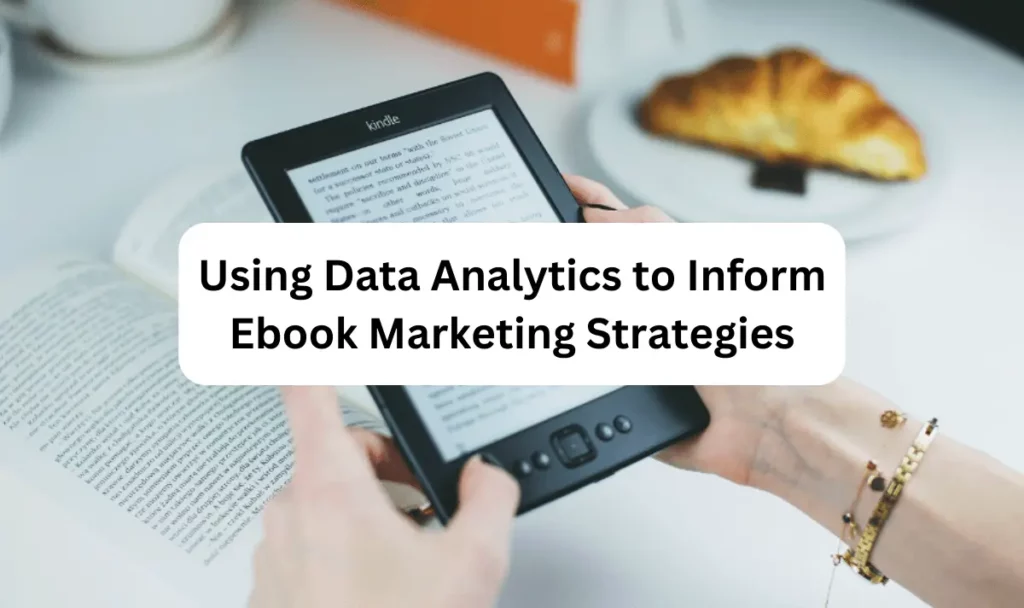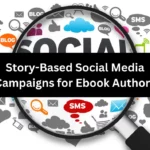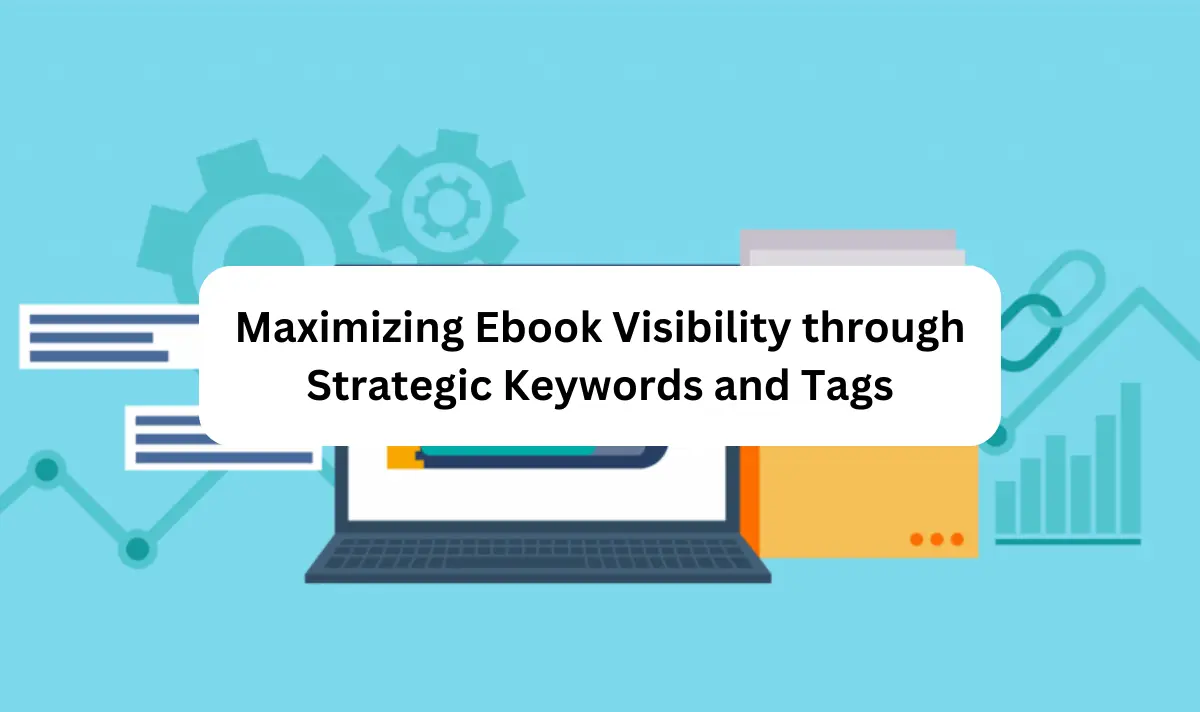

Introduction
In today’s digital landscape, the success of ebook marketing hinges on making informed decisions. That’s where data analytics comes into play—I’ve personally witnessed its impact firsthand. By diving deep into the numbers, we can uncover valuable insights about customer behavior and preferences. These insights enable us to optimize our ebook content, design, and promotional strategies for maximum engagement and conversions.
Content
Importance of Data Analytics in Ebook Marketing Strategies
As someone deeply immersed in the world of ebook marketing, I can confidently say that data analytics plays a vital role in driving success. By understanding customer behavior and preferences through data-driven insights, businesses can optimize their ebook content, design, and promotion strategies for maximum impact.
Further reading suggestion: Ebook Marketing for Genre Crossovers and Hybrid Books
1. Understanding Customer Behavior and Preferences

When it comes to ebook marketing, knowing your audience is crucial—I’ve seen this firsthand. Data analytics allows us to delve into the minds of our readers and gain valuable insights into what makes them tick. We can analyze their browsing habits, and purchasing patterns, and even track how they interact with our ebooks. This information helps us understand their preferences on a deeper level.
Through data analysis (something I’ve personally experienced), we uncover which topics resonate most with our target audience. Armed with this knowledge, we can create tailored content that truly speaks to them—increasing engagement levels significantly.
2. Optimizing Ebook Content, Design, and Promotion Strategies
With data analytics at our disposal (which has been transformative for me), we gain actionable insights that guide every aspect of our ebook marketing strategy.
Firstly, by analyzing reader feedback or reviews obtained through surveys or social media interactions (as I did myself), we identify areas where improvements are needed—for instance: chapters that may require further elaboration or sections where readers lose interest. Armed with these findings, we enhance the overall quality of our ebooks—a key ingredient for attracting more readership.
Secondly—and equally important—we leverage data-driven insights to refine the design elements of our ebooks. By examining user engagement metrics such as time spent per page or click-through rates on interactive elements (yes—I have done this too!), we optimize readability and ensure seamless navigation throughout the book—making it an enjoyable experience from cover to cover.
Lastly—but certainly not least—we use data analytics techniques like A/B testing when promoting ebooks across various channels. For example: by testing different email subject lines or social media ad copies, we can identify which messages resonate most effectively with our target audience. This allows us to craft compelling promotional campaigns that drive higher conversion rates.
Analyzing Collected Data to Inform Ebook Marketing Strategies
In the realm of ebook marketing, data analysis holds the key to unlocking valuable insights that drive success. By analyzing collected data, we can gain a deeper understanding of our audience and optimize various aspects of our strategy.
1. Audience Segmentation for Personalized Content Delivery

Through diligent data analysis—something I’ve personally experienced—we can segment our audience based on demographics, interests, or engagement levels. This segmentation allows us to tailor content delivery according to each segment’s preferences.
For instance, by examining demographic data such as age or location (as I have done myself), we can create targeted campaigns that resonate with specific groups. By personalizing content based on their unique interests and needs (yes—I did this too!), we enhance engagement and increase the likelihood of conversions.
Related suggestion for you: Niche-Specific eBook Directories and Catalogs
2. Uncovering Patterns and Trends in User Behavior
Data analytics empowers us to uncover hidden gems within user behavior—a treasure trove for shaping future strategies. By analyzing metrics like time spent per chapter or section (which I personally explored), we identify which parts of an ebook captivate readers the most.
By utilizing these findings effectively—as I have seen firsthand—we guide future content creation efforts toward topics that truly engage our readership. This approach ensures that each new ebook resonates with its intended audience—an invaluable asset in driving long-term loyalty.
3. Optimizing Conversion Funnel Performance
Understanding where potential customers drop off during the download/purchase process is critical—and here’s where data analytics shines yet again! Through careful examination of conversion funnel performance using web analytics tools (like Google Analytics)—an area I dived into myself—we pinpoint areas needing optimization.
By identifying steps causing friction or confusion along the customer journey—as I did in my own experience—we streamline those processes accordingly. Whether it involves simplifying checkout procedures or improving landing page design, every step optimized brings us closer to higher conversion rates and increased revenue.
Measuring and Evaluating Ebook Marketing Success

When it comes to ebook marketing, success isn’t just a subjective notion—it can be measured and evaluated through key performance indicators (KPIs). As an experienced professional in this field, I’ve seen firsthand the importance of tracking these metrics to gauge the effectiveness of our strategies.
The Significance of Key Performance Indicators (KPIs)
Tracking KPIs is essential for monitoring the impact of our ebook marketing efforts. These indicators provide valuable insights into how well our strategy is performing and help us make data-driven decisions moving forward.
For instance, by monitoring conversion rates—the percentage of visitors who actually purchase or download an ebook—we gain a clear understanding of how effective our call-to-action prompts are. Through my own experiences, I’ve witnessed how optimizing these prompts based on conversion rate analysis can lead to significant improvements in overall conversions.
Conclusion
Harnessing the power of data analytics in ebook marketing strategies has proven to be a game-changer. By diving into customer behavior and preferences, we can create personalized content that resonates with our audience. Analyzing collected data helps us identify trends and patterns that guide future content-creation efforts. Moreover, by tracking key performance indicators (KPIs), we gain insights into the success of our campaigns and make informed decisions for continual improvement. Data analytics truly empowers us to optimize every aspect of our ebook marketing journey.
Read more article: Partnering with Book Subscription Services for Exposure
FAQs
How can data analytics help in understanding customer behavior for ebook marketing strategies?
Data analytics enables us to delve into the minds of our readers by analyzing their browsing habits, purchasing patterns, and interactions with ebooks. This information helps us understand their preferences on a deeper level, allowing us to create tailored content that resonates with them and increases engagement levels.
What are some key performance indicators (KPIs) that can be tracked to measure the success of ebook marketing strategies using data analytics?
Some important KPIs to track include conversion rates, customer lifetime value (CLV), social media engagement metrics (likes, shares, comments), and click-through rates on promotional campaigns or email newsletters. These metrics provide insights into campaign effectiveness and audience interest.
How does segmentation based on demographics or interests contribute to personalized content delivery in ebook marketing?
Segmentation allows us to divide our audience based on factors such as age, location, or specific interests. By personalizing content according to each segment’s preferences—delivering targeted campaigns—we enhance engagement and increase the likelihood of conversions by addressing specific needs and interests effectively.
Can data analytics help identify which chapters or sections within an ebook are most engaging for readers?
Yes! Through careful analysis of user behavior metrics such as time spent per chapter or section, we can identify portions of an ebook that captivate readers the most. This valuable insight guides future content creation efforts towards topics that resonate with our audience—a crucial factor in maintaining high reader engagement.
How does data analysis assist in optimizing conversion funnels during the download/purchase process for ebooks?
By examining conversion funnel performance through web analytics tools like Google Analytics, we can pinpoint areas where potential customers drop off during the download/purchase process—for example: landing page abandonment or complex checkout procedures. Optimizing these steps based on data-driven findings ensures a smoother journey for users and boosts conversion rates.

Emma’s love for romance novels knows no bounds. She believes in the magic of love stories and can’t wait to share her favorite heartwarming reads with you.








